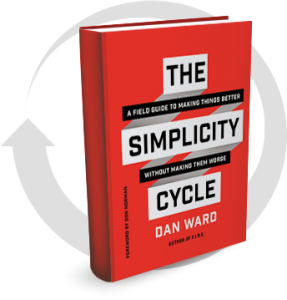Imagine Sherlock without Watson, chocolate without peanut butter, or an accelerator without a brake. In each case, we would have something good but incomplete. Sherlock may be brilliant at solving crimes but he lacks a humanizing bedside manner, which Watson provides. Chocolate is delicious on its own, but the sweet notes are improved and elevated by the addition of a slightly salty peanut butter. And the gas pedal is terrific at making the car go, but at some point we’ll want to slow down or perhaps even stop. Thus, the brake pedal. In each case, adding something (a partner, a complementary flavor, an opposing mechanism) improves the overall experience. The story gets more interesting, the dessert more delicious, the vehicle more drivable.
As designers, coders, or engineers, adding to a design is one of the first creative steps we take. In fact, when we face a blank sheet of paper or an empty screen, adding is the only move available to use. Of course, a single element is seldom sufficient, so we continue to add new pieces, parts, and components as the design matures and gets more complex. The theory is that these additions make our design better – and much of the time, that is the case.
During this early phase of a design, where we add new parts that make the design better, we can map our trajectory on the Simplicity Cycle diagram as a line that points up and to the right. The slope and degree of straightness may vary, but if the design is simultaneously becoming more complex and better, we’re basically heading in this direction:
It turns out there are many different additive moves available to us, different approaches which allow us to expand and improve a design. Here are eight additive strategies to consider:
- Introduce: Insert a previously absent piece into the design. This addition might be a counter-point that performs the opposite of an existing function (i.e. a brake pedal to accompany a gas pedal), or a counter-weight to balance out an existing component.
- Replace: Exchange an existing element with an alternative piece. This strategy is additive in the sense that it introduces a new component, but it also involves removing something from the design.
- Divide: Split a single element into multiple elements. Rather than one superhero with 10 powers, create a team of superheroes with one or two powers each.
- Expand: Transform an existing element into a larger version of itself.
- Add copy: Introduce redundancy. These could take the form of a hot-backup, ready to take over a function in the event of a primary system’s failure. Or the copy can perform its function alongside the original, as in the dual wheels on a semi-trailer.
- Monitor: Insert a check function to confirm an existing element performs as designed. A monitoring function generally produces a signal to indicate status and may automatically trigger a switch-over to a back-up system (see #5 above).
- Roughen: Increase friction between design elements, either in the form of a time delay or a more physical degree of friction. Friction can improve traction and prevent slippage.
- Accelerate: Introduce an element sooner in the process than planned. This is a form of time-shifted addition, where the element was always intended to be part of the design but is now included earlier.
A word of caution: Because additive moves are most effective in the early stages of a design, they are also the easiest tools to over-use. Adding new pieces and parts is an essential and productive strategy — until it isn’t. We need to be sure we don’t flood Sherlock with too many Watsons, overwhelm the chocolate with too much peanut butter, or equip our car with too many brake pedals.
So, in addition to learning how to use additive strategies, we’ll need to add an additional method to our toolbox: subtracting. That is the topic for our next 3-minute design lesson, coming soon.
(This first appeared on SmartBlog)



